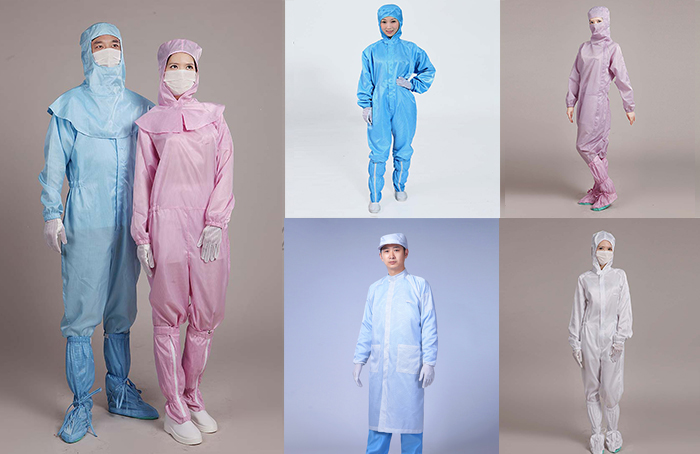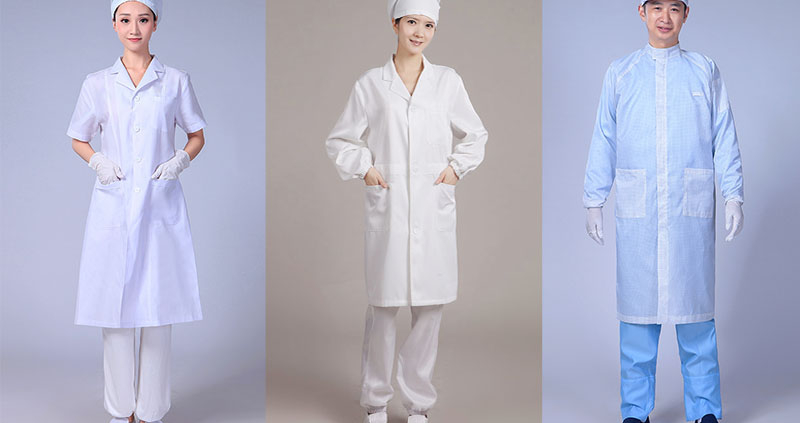Cleanroom clothing is a set of specialized garments and accessories designed to be worn by individuals working in cleanroom environments. Cleanrooms are used in a variety of industries, including electronics, pharmaceuticals, biotechnology, aerospace, and manufacturing, among others. The goal of cleanroom clothing is to prevent contamination of the products or processes being carried out in the cleanroom.
Cleanroom environments are designed to control the number and size of airborne particles, which can cause contamination. Cleanroom clothing is an essential part of this contamination control strategy, as people are a significant source of particles. Cleanroom clothing can also protect the wearer from exposure to hazardous materials or environments, such as radioactive or toxic materials.
Cleanroom clothing is typically made from synthetic fabrics, such as polyester, nylon, or a combination of these materials. These materials are chosen for their low particulate shedding properties and their ability to withstand multiple washings and sterilization cycles. Cleanroom clothing can also be treated with anti-static or anti-microbial coatings to further reduce the risk of contamination.

Cleanroom clothing comes in a variety of styles and configurations, depending on the requirements of the cleanroom environment. The most common types of cleanroom clothing include coveralls, gowns, smocks, hoods, booties, and gloves.
Coveralls are full-body suits that provide complete coverage of the wearer’s clothing and skin. They are typically made from non-linting materials and are available in both reusable and disposable options. Disposable coveralls are often made from lightweight materials and are worn for a single use. Reusable coveralls, on the other hand, are made from heavier materials and can withstand multiple washings and sterilization cycles.
Gowns and smocks are similar to coveralls, but they are designed to be worn over regular clothing. They provide partial body coverage and are typically worn in conjunction with other cleanroom clothing items, such as hoods, booties, and gloves.
Hoods are worn over the head and neck to provide additional protection from particulates and other contaminants. They are often made from the same materials as other cleanroom clothing items and are available in both disposable and reusable options.
Booties are worn over shoes to prevent particulate contamination from footwear. They are typically made from non-linting materials and are available in both disposable and reusable options.
Gloves are worn to protect the wearer’s hands from exposure to hazardous materials or environments. They are typically made from nitrile or latex and are available in both sterile and non-sterile options.
Cleanroom clothing is typically designed to meet specific cleanliness standards, which are established by organizations such as the International Organization for Standardization (ISO) or the US Federal Standard 209E. These standards define the maximum allowable number of particles per cubic meter of air in the cleanroom environment and dictate the level of protection required for the wearer.
Cleanroom clothing is typically rated by a “class” or “grade” designation, which indicates the level of cleanliness and protection provided. Class 1 cleanroom clothing, for example, is designed for use in environments with the lowest particle levels, while Class 100,000 cleanroom clothing is designed for use in environments with higher particle levels.
In addition to the design and construction of the clothing itself, proper use and maintenance of cleanroom clothing is essential for effective contamination control. Cleanroom clothing should be put on in a designated changing area, which is designed to minimize the introduction of particles. The clothing should be properly fitted to the wearer to ensure maximum coverage and protection.
Cleanroom clothing should also be regularly inspected for damage or signs of wear, and should be washed or sterilized according to the manufacturer’s recommendations. Depending on the requirements of the cleanroom environment, cleanroom clothing may need to be replaced after a certain number of uses or after a
certain amount of time. It is important to establish a regular cleaning and replacement schedule to ensure the integrity of the cleanroom environment.
The use of cleanroom clothing is essential for maintaining the cleanliness and integrity of the products or processes being carried out in cleanroom environments. The cost of contamination can be high, both in terms of product quality and safety, as well as regulatory compliance and reputation. Cleanroom clothing is a critical investment in the protection of both products and personnel.
While cleanroom clothing is often associated with high-tech industries, it is also used in a variety of other settings where contamination control is important. For example, hospitals and healthcare facilities use cleanroom clothing to prevent the spread of infectious diseases and to protect healthcare workers from exposure to hazardous materials.
In addition to the use of cleanroom clothing, there are other contamination control strategies that can be employed in cleanroom environments. These may include the use of HEPA filters, airlocks, and regular cleaning and maintenance of equipment and surfaces. However, cleanroom clothing is an essential component of any contamination control program, as people are a significant source of particulate contamination.
In conclusion, cleanroom clothing is a critical component of contamination control in a variety of industries and settings. The use of specialized garments and accessories can help prevent the introduction of particles and other contaminants into cleanroom environments, protecting both products and personnel. Proper use and maintenance of cleanroom clothing is essential for effective contamination control, and adherence to established cleanliness standards is key to ensuring the integrity of the cleanroom environment.




Leave a Reply
Want to join the discussion?Feel free to contribute!